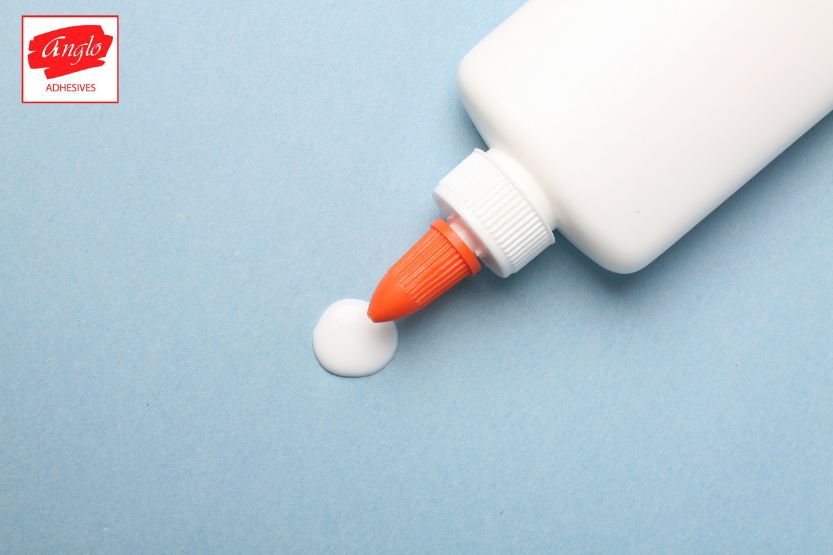Blog
Exploring the Potential: Exploring PVA Glue Usage in DIY Projects

In the realm of adhesives, one versatile contender takes centre stage: PVA glue. This PVA adhesive has established a household brand in DIY, crafting, woodworking, and a variety of other uses due to its polyvinyl acetate base. It’s renowned for its strong bonding properties and easy PVA glue usage, making it a go-to choice for projects of all sizes. But what is PVA used for, and how can it enhance your DIY endeavors? Let’s dive into the world of PVA glue use and explore the myriad ways you can harness its potential.
Mastering the Basics: PVA Glue Usage
What is PVA and what is PVA used for? PVA glue, also known as white glue, is a water-based adhesive known for its remarkable adhesive qualities and quick drying time. It’s the adhesive of choice for projects where a strong yet flexible bond is required. Understanding the basics of PVA glue usage is essential for ensuring successful outcomes in your projects. By understanding its applications and following best practices for usage, you can harness the full potential of PVA adhesive and unleash your creativity in your DIY projects.
Proper Surface Preparation: The foundation of a strong bond begins with proper surface preparation. Ensure that the surfaces you intend to glue are clean, dry, and free from any contaminants. A well-prepared surface enhances the effectiveness of the PVA adhesive.
Even Application: When applying PVA glue, strive for an even coat. An even application ensures that the adhesive dries uniformly, preventing weak spots in the bond. It’s a simple yet crucial step in achieving optimal results.
Clamping or Weight: In larger or heavier projects, using clamps or placing weights on the glued surfaces can significantly improve the bond’s strength. This additional pressure aids in creating a solid connection between materials.
Drying Time: While PVA glue typically dries within 15 to 30 minutes, it’s best practice to allow it to set for a few hours or overnight for the strongest bond. Always follow the manufacturer’s recommendations for specific drying times of PVA adhesive to achieve the best results.
Cleaning Excess Glue: If excess glue squeezes out from the glued joint, be sure to wipe it away with a damp cloth before it dries. This not only maintains a clean finish but also ensures the adhesive doesn’t interfere with the project’s aesthetics.
Diverse Avenues of PVA Glue Use
The beauty of PVA glue lies in its versatility. This PVA adhesive finds its place in a variety of applications, including:
Crafting: For crafters, PVA glue is a staple. It’s perfect for adhering paper, cardboard, and fabric to projects ranging from scrapbooking and card-making to creating homemade decorations.
Woodworking: Woodworkers trust PVA glue for its remarkable bonding capabilities. It’s ideal for joining wood pieces, making it suitable for furniture construction, cabinetry, and various other woodworking applications. PVA adhesive provides a strong and durable bond that withstands the test of time.
School Projects: PVA glue is a popular choice for school assignments and projects. Its ease of use and safety make it a go-to adhesive for arts and crafts, allowing children to explore their creative potential. PVA adhesive provides a reliable bond without wrinkling or warping the paper.
Home Repairs: For quick fixes and small household repairs, PVA glue use is a reliable choice. It can be used to repair loose veneer, reattach trims, or fix wooden furniture, restoring items to their former glory. PVA adhesive provides a strong and reliable bond for a variety of materials.
Bookbinding: Bookbinders appreciate the flexibility and strength of PVA glue. It’s commonly used to bind books and other printed materials, creating a durable book spine that can withstand the test of time.
Model Making: Enthusiasts of model-making often rely on PVA glue use to assemble plastic, paper, or wooden models. Its quick drying time and versatility make it a preferred choice for precision work. PVA adhesive can also be used in fabric and textile projects.
DIY Projects: From constructing model aeroplanes to crafting homemade masks, PVA glue is a valuable asset in various DIY endeavours, enabling you to bring your creative visions to life.
One especially exciting area of exploration is the use of PVA glue for polystyrene projects. PVA glue for polystyrene offers a reliable solution for joining polystyrene sheets together, whether for architectural models, hobby crafts, or theatrical props. By exploring the potential of PVA glue for polystyrene projects, DIY enthusiasts can unleash their creativity and embark on exciting new adventures in crafting and design.
Conclusion: PVA Glue Use Unleashed
Embracing PVA glue usage and understanding its many uses will help boost your creations and unlock your creative potential. Whether you’re a seasoned crafter, a determined carpenter, or someone eager to tackle a DIY project, PVA glue provides the dependability and strength required to see your ideas through to completion. Remember the key application skills as you embark on your creative journey and discover the unlimited possibilities that PVA glue can unlock. Next time you find yourself pondering, “What is PVA used for?” It’s your all-access pass to a world of crafting opportunities. With its adaptability and powerful performance, glue is the key to turning ideas into tangible creations. PVA adhesive offers a reliable solution for bringing your ideas to life.